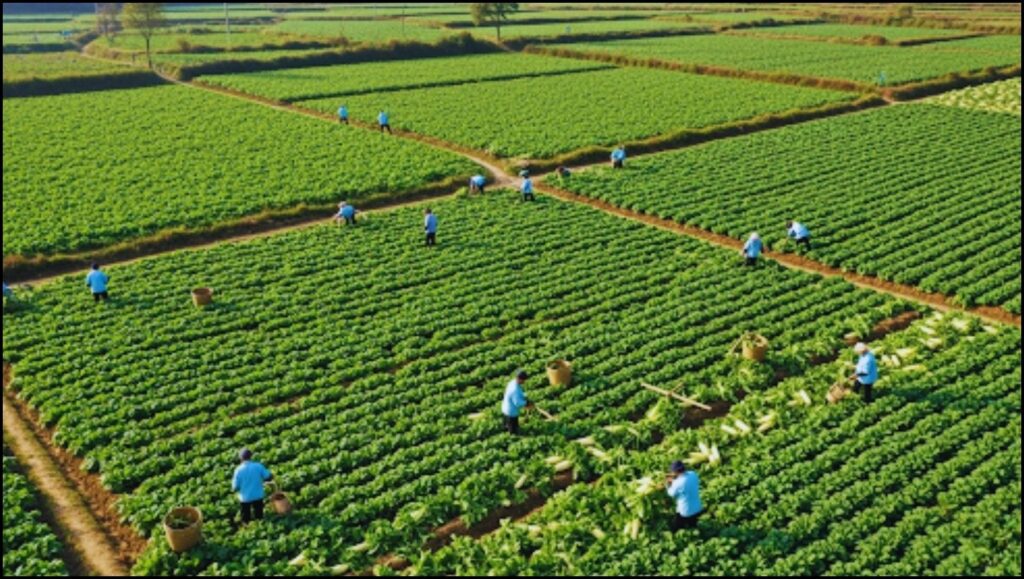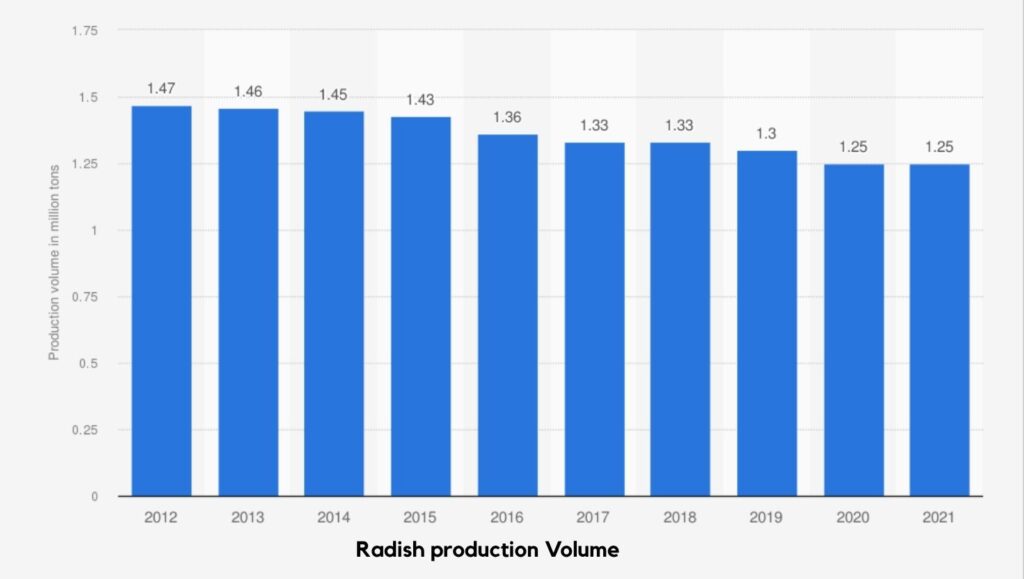
China is the world’s largest radish producer, a position it has held for many years due to its extensive agricultural capacity and favorable climate. The country’s output of this versatile root vegetable, which is a staple in many cuisines, far surpasses that of any other nation. This agricultural dominance is not just a matter of scale but also reflects a sophisticated and deeply embedded farming tradition that has evolved with modern technology. The largest radish producer on the global stage, China’s success is a testament to its efficient and large-scale agricultural systems.
Understanding the Scale of China’s Radish Production
The scale of Chinese radish production is remarkable. According to data from various agricultural organizations, including the Food and Agriculture Organization (FAO) of the United Nations, China produces tens of millions of metric tons of radishes annually. This volume represents a commanding share of the total global vegetable harvest. The sheer size of its farming operations allows for both mass production of common varieties and the cultivation of specialty radishes tailored for specific markets.
Radishes, known scientifically as Raphanus sativus, are a fast-growing, cool-season crop, and China’s diverse geography and climate zones—from the subtropical south to the temperate north—enable year-round cultivation. This geographic diversity is a key factor in the country’s ability to maintain a consistent supply for both domestic and international markets. The widespread cultivation of different radish varieties, including the large, white daikon and smaller red varieties, demonstrates the crop’s deep integration into the country’s agricultural landscape.

A Look at Other Major Players in the Radish Market
While China is the undisputed leader, other countries also have significant radish production. Japan and South Korea, in particular, are major producers and consumers of radishes, which are central to their culinary traditions. In Japan, the daikon radish is an indispensable ingredient, featured in everything from stews to pickles. Similarly, in South Korea, the Korean radish or mu is a foundational component of kimchi and other traditional dishes.
The production in these countries, while substantial, is generally more focused on domestic consumption and the cultivation of specific, culturally important varieties. For example, a report on agricultural statistics by the Korean Statistical Information Service indicates that radishes are one of the most widely cultivated crops in South Korea, with a considerable annual yield that supports the country’s high demand. This illustrates the importance of the vegetable in regional diets and economies beyond simple commodity trading.
In Europe, nations like Germany, France, and Italy are also notable producers. However, their output is often geared toward local and regional markets, with a focus on smaller, quicker-maturing varieties like the classic red globe radish. The European market for radishes is well-established, but it operates on a different scale and with different consumption patterns than the vast Asian markets.
Radish as a Global Commodity: Exports and Culinary Impact
China’s role as the largest radish producer extends beyond its borders, as the country is also a leading exporter of the vegetable. Its export market is supported by sophisticated logistics and competitive pricing, which allows it to supply fresh radishes to Southeast Asia, Europe, and North America. This position in the export market is crucial for the global supply chain, as it helps meet consumer demand in countries where radish cultivation is either not as extensive or seasonally limited.
The global demand for radishes is diverse, reflecting the vegetable’s use in various culinary traditions. Radishes are enjoyed raw in salads, pickled, or cooked in soups and stews. This versatility makes it a valuable crop for farmers worldwide. The global radish seed market is also growing, driven by consumer demand for healthy produce and advancements in seed technology that create new, high-yield varieties resistant to disease.
Modern Farming and Sustainable Practices
Modern Chinese radish farms often employ a combination of traditional farming knowledge and contemporary agricultural techniques. These include advanced irrigation systems, soil management practices, and integrated pest management. The use of organic fertilizers and a reduction in chemical inputs are increasingly being studied and implemented to improve both yield and the environmental footprint of farming. Research published in academic journals like MDPI has highlighted how such practices can not only increase radish yield and quality but also optimize soil health, providing a model for sustainable crop production.
The future of the radish market is tied to these ongoing developments. As consumer preferences shift towards healthier, locally-sourced, and organically-grown produce, the agricultural sector, especially in leading countries, is adapting. The growth of the global fresh radish market is projected to continue, fueled by consumer awareness of the health benefits of radishes, which are rich in vitamin C and fiber. This trend further solidifies the role of key producers, like China, in meeting a growing worldwide demand.
The radish’s journey from a locally cultivated staple to a globally traded commodity underscores the interconnectedness of modern agriculture. While the pungent root may seem unassuming, its production and trade are a significant part of the global food system, with China at the center of its cultivation.
Indonesia Dominates Global Palm Oil Production Amid Economic and Environmental Scrutiny
